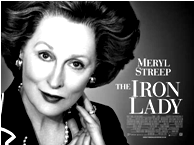题目内容
18.The butterfly,which is competitive swimming's newest stroke(划水),was developed in the mid-1930s,but it wasn't allowed in the Olympics until 1956.The story of the butterfly is a good illustration of how coaches and swimmers are constantly searching for ways to improve stroke efficiency.During the 1920s,the Japanese Olympic coaches used underwater photography to research stroke mechanics,and their efforts paid off when Japanese competitors won five of the six men's swimming gold medals at the 1932 Games in Los Angeles.
It was a wake-up call to the rest of the swimming world,and one of the top US coaches-David Armbruster at the University of Iowa-began doing his own filming.
Armbruster was seeking to make the breaststroke faster.He knew that the action of bringing their arms forward underwater slowed breaststrokes down,so he came up with a method of bringing the arms forward over the water.The improved stroke brought great improvements in speed.
The following year,Jack Sieg,an Iowa swimmer,developed a technique involving swimming on his side and beating his legs at the same time similar to a fish tail.As Armbruster later explained in the book The History and Background of the Olympic Games:"Sieg tried the same action while swimming face down.He synchronized(使…同步) his leg action with the butterfly arm action using two leg beats to each arm pull."But the kick was ruled illegal because the legs moved in a vertical (垂直的) way.
Within a few years,nearly every breaststroker was using this overarm butterfly action without the kick.The pure butterfly wasn't legalized for some two decades,but at the 1956 Olympics in Melbourne"the butterfly"became an official event.
56.The Japanese coaches use underwater photography in order toC.
A.wake up the swimming world
B.know how to be a mechanic.
C.improve stroke efficiency.
D.be paid more money
57.According to the passage,which of the following statements is NOT true?D
A.The butterfly was added to the Olympics in 1956.
B.David Armbruster used filming to study stroke mechanics.
C.Sieg came up with the idea of beating legs like a fish tail.
D.The Japanese coaches improved butterfly stroke.
58.Before the pure butterfly was officially recognized,Byears or so had passed.
A.15 B.20 C.30 D.35
59.The best title of the article isA.
A.How did"the butterfly"come into being?
B.When did"the butterfly"become an official event?
C.How did the Japanese wake up the swimming world?
D.Why did the coaches and swimmers improve stroke efficiency?
分析 本文主要写了蝶泳的产生、改进、发展、提高最后成为奥运比赛项目的一个过程.
解答 56.C 细节理解题,根据第一段最后一句The story of the butterfly is a good illustration of how coaches and swimmers are constantly searching for ways to improve stroke efficiency.蝴蝶的故事是一个很好的例子,说明教练和游泳运动员是如何不断寻找提高划水的效率的方法.所以下文中日本人安装水下摄像机就是为了研究提高划水的效率,故答案选C.
57.D 细节理解题,根据文章第四段的描述可以看出是Armbruster改进了游泳时的划水动作,根据句子The improved stroke brought great improvements in speed改进的划水动作在速度上带来了很大的提高,所以答案选D.
58.B 细节理解题,根据句子The pure butterfly wasn't legalized for some two decades,but at the 1956 Olympics in Melbourne"the butterfly"became an official event.蝶泳在20年前没有合法化,但是在墨尔本的1956届奥运会上蝶泳才成为比赛项目.two decades 是二十年,所以答案选B.
59.A 主旨大意题,纵观全文可知,本文主要写了蝶泳的产生、改进、发展最后成为奥运比赛项目的一个过程,所以答案选A.
点评 阅读理解题测试考生在阅读基础上的逻辑推理能力,要求考生根据文章所述事件的逻辑关系,对未说明的趋势或结局作出合理的推断;或根据作者所阐述的观点理论,对文章未涉及的现象、事例给以解释.考生首先要仔细阅读短文,完整了解信息,准确把握作者观点.

---Oh,sorry.( )
| A. | may | B. | will | C. | must | D. | need |
-I'll take ______,in case the journey is boring.( )
| A. | either | B. | both | C. | all | D. | neither |
 Baroness Thatcher,Britain's former Prime Minister,died on April 8at the age of 87.Baroness Thatcher was born Margaret Hilda Roberts on 13October 1925.She spent her childhood in Grantham,where her father Alfred owned two shops.
Baroness Thatcher,Britain's former Prime Minister,died on April 8at the age of 87.Baroness Thatcher was born Margaret Hilda Roberts on 13October 1925.She spent her childhood in Grantham,where her father Alfred owned two shops.